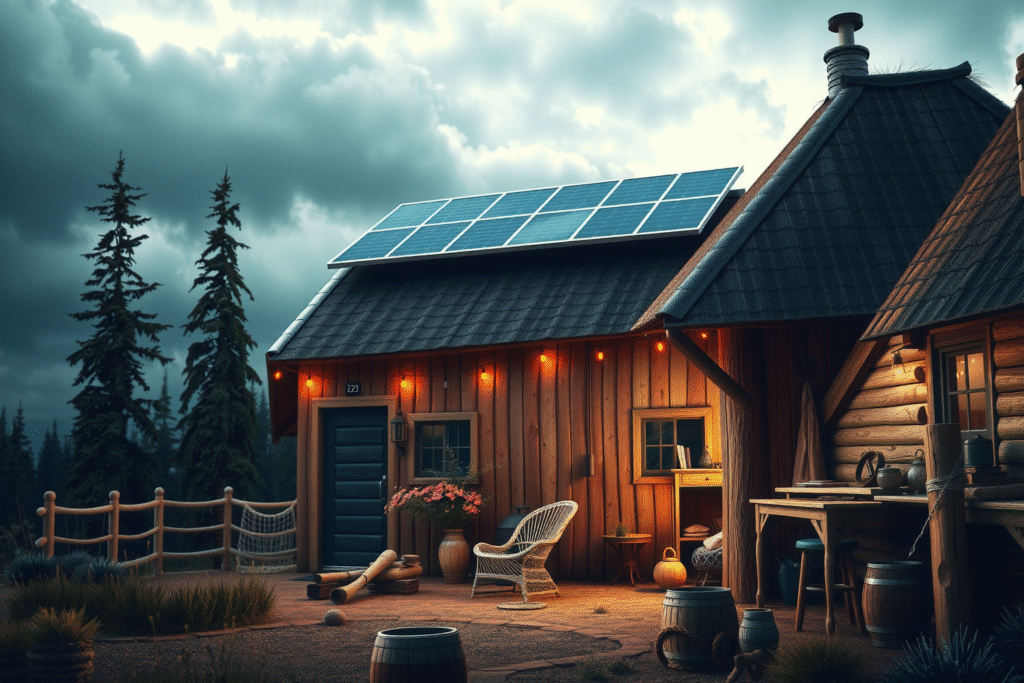How to Embrace Off-Grid Living (Without Moving to a Cabin)
Many assume off-grid living requires a remote cabin, but the same sustainable strategies work for urban, suburban, and rural homes. Adopting off-grid principles—like renewable energy and energy efficiency—can slash electricity bills, boost self-sufficiency, and provide backup power during outages.
Contrary to popular belief, off-grid living doesn’t always mean disconnecting entirely from utilities. Instead, it’s about reducing reliance on the grid through smart, renewable solutions. Below, we’ll explore key steps to transition toward energy independence—plus free tools, guides, and expert resources to help you get started.
Solar and Wind Power Generation
Solar power remains the top choice for off-grid energy due to its affordability and scalability. Modern solar panels efficiently convert sunlight into electricity—even in cloudy climates—with optimized systems for maximum output.
For wind power, homes in consistently windy areas can benefit from small-scale residential turbines. Paired with battery storage, these systems provide reliable electricity, whether you’re in a city or the countryside.
Energy Storage Technologies
Off-grid households can store power to use at a later time with a range of energy storage technologies. The most popular options are lead-acid batteries, lithium-ion battery banks, and flow batteries. The type of battery chosen will depend on the available budget and future expansion plans.
For most off-grid households, lead-acid batteries are the most cost-effective choice for energy storage. They can be charged and recharged many times, providing reliable storage for both solar and wind power systems. Lithium-ion battery banks are more modern alternatives; they have a longer lifespan, reduced size and weight, and higher cycle life. Finally, flow batteries are being investigated as a potential replacement for lithium-ion for their cost-effectiveness, long lifespan, and development potential.
Passive Design Components
Passive design components can help off-grid households use less energy for heating and cooling. Passive solar design can be integrated into a home’s architecture to maximize sunlight exposure in winter and minimize it in summer. Windows can be double-paned to help maintain temperature inside the home.
Additionally, Passive Energy Recovery Ventilation (ERV) systems can be used for better indoor air quality with less energy used for heating and cooling. ERV systems exchange heat from indoor air to outdoor air, reducing the energy required to heat or cool fresh air.
Energy-Efficient Gadgets
Simply reducing a household’s energy use can be one of the most effective methods of off-grid living. Energy-efficient appliances and systems for lighting, heating, and cooling help modern off-grid households maintain a comfortable standard of living at a lower wattage. For example, LED light bulbs draw significantly less energy than traditional bulbs and last longer. Heat pumps are another efficient alternative to traditional HVAC systems as they require less electricity to heat and cool air.
Conclusion
In conclusion, off-grid living can be achieved by reducing dependency on public utilities through energy-efficient power generation, energy storage systems, passive designs, and energy-efficient gadgets. As the costs of renewable energy systems continue to decrease, off-grid living is becoming an attractive option for more people. By making the transition to off-grid living, people can save on electricity bills and be better equipped in the event of a power outage.
Helpful Resources
-
Energy.gov’s Solar Guide – Official U.S. guide to residential solar.
-
PVWatts Calculator – Estimate your solar potential by location.
-
WindExchange Small Wind Guide – U.S. Department of Energy’s wind energy resource.
-
Battery University – In-depth guides on battery tech.
-
Home Battery Storage Buyer’s Guide – Compare top brands.
-
Passive House Institute – International standards for ultra-efficient homes.
-
DOE’s Insulation Guide – How to properly insulate your home.
-
ENERGY STAR Product Finder – Certified efficient appliances.
-
Heat Pump Calculator – Find the right size for your home.
-
REopt Lite – NREL’s tool for optimizing renewable energy systems.
-
Off-Grid Solar Calculator – Size your solar setup accurately.



